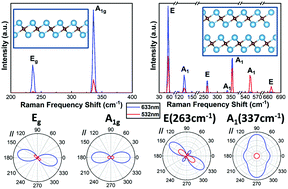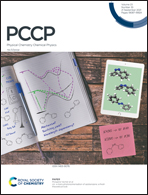Theoretical assessment of Raman spectra on MXene Ti2C: from monolayer to bilayer†
Abstract
The structural, vibrational and Raman spectra properties of monolayer and bilayer Ti2C excited by two commonly used laser lines (532 nm and 633 nm) are investigated by first principles calculations to establish a correlation among layer stacks and optical features for two-dimensional MXenes. The stability of the monolayer and the energetically preferable stacking configuration are demonstrated by phonon dispersion. The monolayer and bilayer Ti2C systems are found to exhibit different point group symmetries and thereby the Raman properties due to the symmetry breaking of the bilayer structure caused by interlayer van der Waals interactions. We listed all Raman-active modes for monolayer (bilayer) Ti2C, i.e., one (five) out-of-plane A1g (A1) and one (five) pair (pairs) of degenerate in-plane Eg (E) vibration modes. Polarization angle dependent Raman intensity has been discussed in terms of the locations of two (four) maxima in the parallel (perpendicular) configuration, which might be applied in experimentally identifying monolayer and bilayer Ti2C. The difference in the polarization direction averaged Raman spectra between monolayer and bilayer Ti2C can be explained by the characteristics of light absorbance.



 Please wait while we load your content...
Please wait while we load your content...